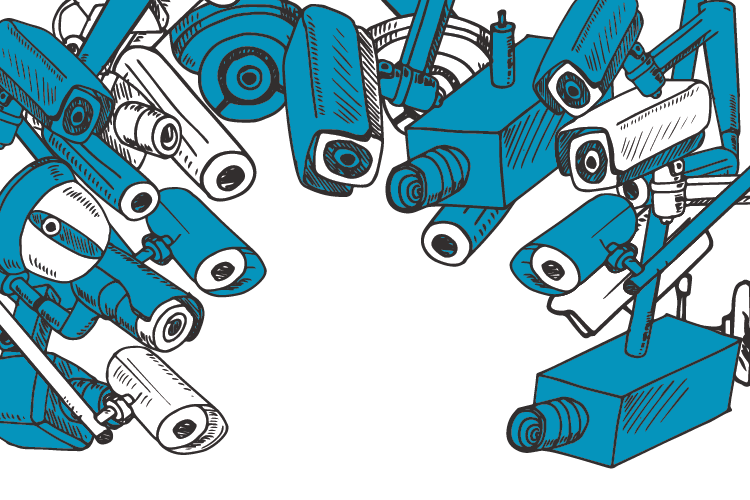Summary
-
Tattleware is not just intrusive; it is also ineffective, as your employees still have access to their own devices.
-
Employees who are being monitored can feel stressed and resentful, leading to higher turnover rates and lower productivity.
-
The use of tattleware makes your organization vulnerable to undesirable legal situations.
Employee monitoring has long been a topic of much interest and debate. In an attempt to find out the extent of employee productivity, employers have sought ways to keep tabs on their workers — from Henry Ford’s 1914 Sociological Department that was used to monitor practically every aspect (work and personal) of Ford workers’ lives to Elon Musk contracting a PR firm to monitor Tesla employees’ Facebook activity.
As hybrid and remote work become more commonplace — spurred on by the COVID-19 pandemic — more employers are turning to employee monitoring software, also known as tattleware or bossware. Without the ability to physically see their employees hard at work at their desks, companies are turning to different apps, monitoring tools, and surveillance software.
According to a survey conducted by the IDC, 67.6% of North American employers with more than 500 employees are currently using employee monitoring software. In another study, ExpressVPN found that 78% of the employers it surveyed are using monitoring tools.
Tattleware and monitoring software can take on many different forms. Some examples include monitoring:
- When an employee steps away from their computer
- Employees’ online activity (websites visited, time spent using specific software like Slack, etc.)
- What employees are typing and what keystrokes are being used
- The topics of discussion amongst employees by taking screenshots or even screen recordings
- The facial expressions of remote workers during video calls using video analytics tools (this supposedly helps employers determine who is contributing more than others in meetings)
- What employees are doing by watching and listening in through their laptop webcams or microphones
We spoke with Jon Hyman, a partner in the Employment & Labor practice at Wickens Herzer Panza, to get his take on the topic. He believes that “employers that try to regulate employees’ use of workplace technologies in this way are fighting a Sisyphean battle.” It is a futile and harmful practice that uses tech to police and punish employers instead of effectively addressing productivity issues.
Enforcement will always be a losing battle
One issue with tattleware is that it is actually quite ineffective in doing what it ultimately sets out to do – keep tabs on your employees.
“I hate this type of employee monitoring. I call it the iPhone-ification of the American workforce,” says Hyman. “No matter your policy trying to monitor your technology and your employees’ related productivity, if your employees can take their smartphones out of their pockets to circumvent your efforts, how can you effectively police anything? Why have a policy you cannot police and enforce? It’s also incredibly creepy and intrusive.”
You have a performance issue, not a tech issue
Tattleware supposedly makes it easier for employers to identify employees who are slacking. But knowing the time spent on work tasks or whether they’re streaming the World Cup on another tab doesn’t tell you anything about why productivity is suffering.
“Instead of regulating an issue you cannot hope to control, treat employees’ use of technology for what it is — a performance issue,” Hyman explains. “If an employee is not performing up to standards because he or she is spending too much time on non-work activities, then address the performance problem. Counsel, discipline, and ultimately layoff if the performance does not improve.”
Employee monitoring breeds resentment and reduces employee engagement
“A slacking employee, however, will not become a star performer just because you limit their social media access, keep an eye on how often they shop on Amazon, or log their Spotify playlists,” Hyman says. Instead, “they will just find another way to slack off and will resent you for your intrusion of their privacy. Instead of wasting your resources to fight a battle you cannot win, reapportion them to win battles worth fighting.”
In its survey, ExpressVPN found that the use of tattleware can have negative effects on employee mental health and wellbeing. Most employees surveyed felt stress and anxiety about their employers monitoring their activities. Thirty-two percent of respondents said that they didn’t take breaks as often for fear of repercussions.
The very tools that are meant to be addressing dips in productivity are ultimately breeding distrust amongst workers, reducing performance and employee engagement.
In a period where employees are resigning in droves, how wise is it for your company to gain a reputation for spying on their staff?
Employee monitoring can leave you vulnerable to legal issues
Although there are many employee monitoring service providers out there that work within the law, using tattleware can land you in some unpleasant legal situations.
According to the law firm Skadden, there are five potential legal issues to consider before implementing tattleware:
- Invasion of privacy. An employee could take legal action against you if your monitoring activities are found to be highly offensive or end up revealing facts about their personal lives outside of work.
- Unfair labor practice charges. Under the National Labor Relations Act of 1935, employers can be charged if their monitoring reveals information about labor organizing efforts.
- Employment discrimination. Tools like facial recognition software may reveal characteristics about employees that are legally protected. Facial expression tools may not take cultural differences into account and make unfair assumptions about certain staff members.
- Unpaid wages and overtime. Just because an employee isn’t at their computer, it doesn’t mean that they aren’t working. Using monitoring software to pay hourly employees could result in unpaid wages and overtime for time spent doing things like reading, writing, taking phone calls, etc.
- Workplace injuries. Monitoring software can lead to overworked and burnt-out employees. Physical injury may also occur. In March 2022, a large e-commerce company using monitoring tools was fined $60,000 for causing employees’ joint and muscle injuries. These injuries were a result of employees overworking in order to meet deliverables.
Build an environment of trust instead of fear
“We ask so much of our employees, even more so during COVID. The 9-to-5 is no longer relevant. If my employee, who is giving up nights and weekends for me, wants to spend a few minutes during the workday posting to Facebook, or checking the score of last night’s game, or buying something on Amazon, I just don’t care. I only care when it reaches the level of distraction and impacts performance. Then, however, we are treating the performance problem, not the technology problem—which is the appropriate and practical solution.”
“To put it another way, if you don’t trust your employees enough to do their jobs, why are you employing them in the first place?” Hyman concludes. Ultimately, spying on your employees damages your reputation and breeds mistrust. A happy, productive, and engaged workforce is attainable through trust, transparency, and capable leadership.
An engaged workforce is a productive workforce
The best way to ensure your team stays productive and maintains good performance is to keep them engaged. Workforce management software sets you up to get the basics of employee engagement right.
Scheduling must be done in a way that is fair, efficient, and transparent. It must be flexible, allowing for adjustments like shift swaps and shift bids to be made on the fly. You also need a precise time and attendance system in place that makes it easy for employees to review their hours and see what they’re owed.
For more tips on how to drive employee engagement, watch our webinar – How to Drive Engagement for Hourly Employees





